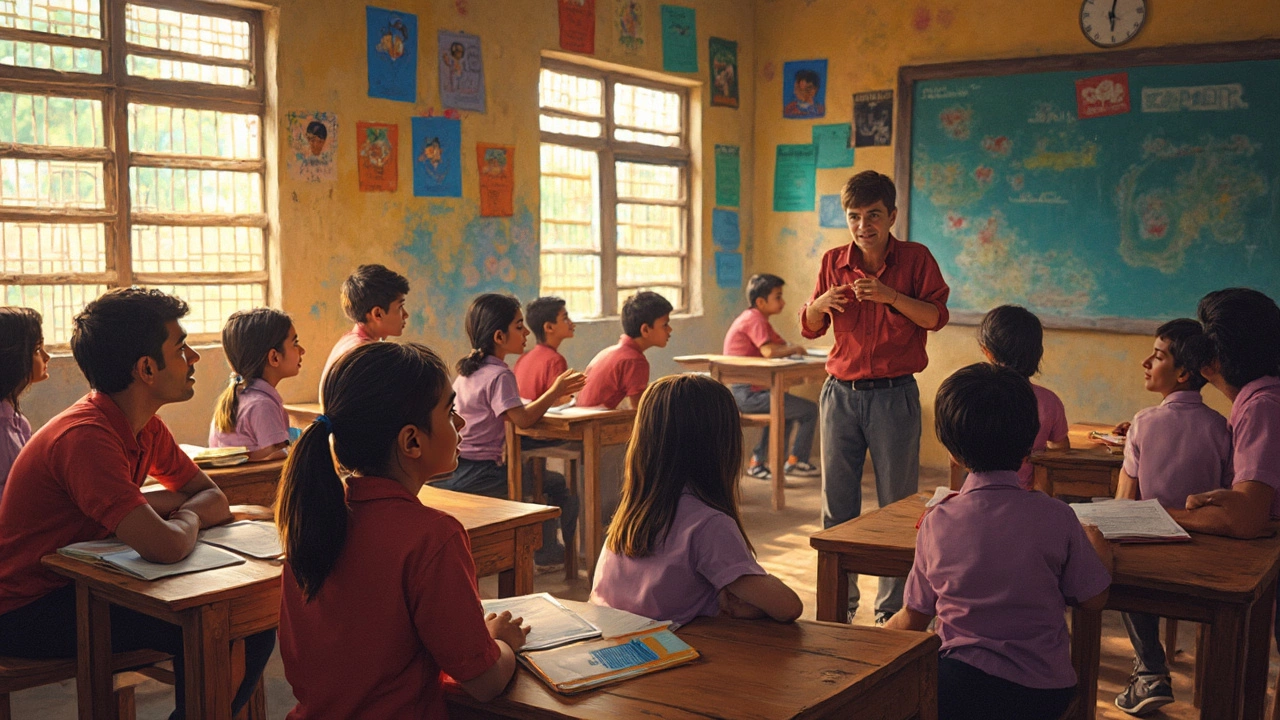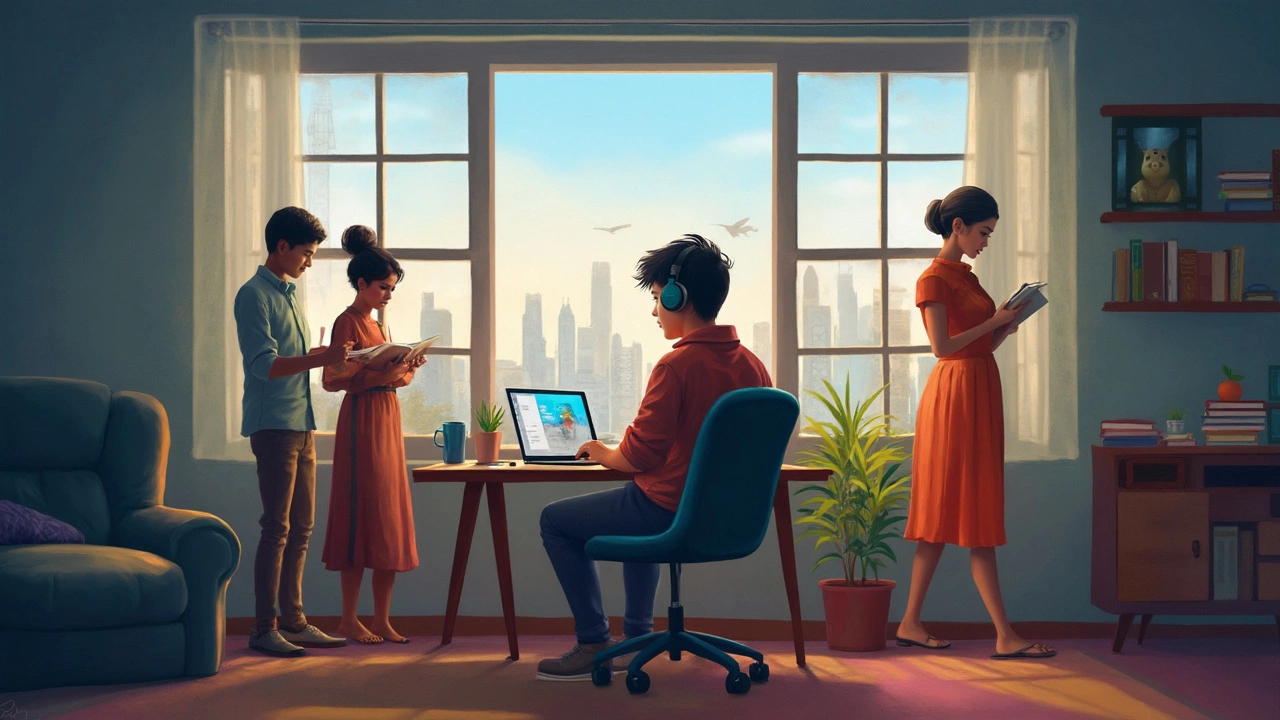Distance Learning vs Classroom Learning: Which Is Better for Students?
Posted on Jun 29, 2025 by Elara Greenfield

You know that weird moment when you’re Zooming in your pajamas and wonder if you’re missing out on something real? Or are you one of those who rolls their eyes at online classes, dying for a real face-to-face vibe? It’s wild how much education’s changed. Just a few years ago here in Sydney, hardly anyone thought mainstream school or uni would shift online, except in sci-fi movies. Now, virtual classrooms and digital lectures are just business as usual. But is staring at a screen really better—or worse—than sitting in an actual classroom? Or is it all noise and personal taste? The battle between distance learning and classroom learning keeps heating up, but the real story is messier (and stranger) than you’d think.
How Distance Learning Works In Reality
Let’s pull apart the layers behind those cheerful course ads. Distance learning—the whole online education scene—comes in pretty much every flavor these days. You’ve got self-paced courses with pre-recorded videos, live-streamed lectures that mimic actual classroom schedules, even real-time workshops where everyone is mic-on and camera-ready. Globally, more than 300 million students have tried online courses since 2020. Australia? We’re right there in the mix—data from the ABS found over a quarter of tertiary students enrolled in online-only units last year. It’s not just for uni or TAFE students either; high schoolers, full-time workers, and even retirees are jumping in. The flexibility means you can study from home, a café, or even while watching your little one at the park.
But let’s be real. With all that “learn anytime, anywhere” hype, distractions creep in fast. Living in a cozy flatshare or juggling work shifts? You might be laser-focused sometimes—but other days, your attention is MIA. YouTube tabs call your name, housemates barge in, your phone blows up. It’s easy to drift without that physical ‘class energy’. Some people call it freedom. Others, well, see a recipe for procrastination. Sure, self-motivation becomes your best friend (or worst enemy), and time management is not just a nice-to-have. The line between work hours and Netflix blurs fast if you’re not careful.
There’s a huge plus, though: students often report higher comfort and lower stress when learning at home. You can pause a complicated video, rewind, or review tricky content as much as you need. Access to forums, chats, and Slack groups glues you into a community—at least in theory. Some of the most successful students on platforms like Coursera and Open Universities Australia say their secret is treating distance learning like a real job: set up a regular schedule, set boundaries, and show up every day, even if ‘showing up’ means turning on your laptop while sipping coffee in pyjamas.
Take a look below at some real differences in flexibility and resources across the two models:
| Feature | Distance Learning | Classroom Learning |
|---|---|---|
| Schedule | Flexible, often self-paced | Fixed and instructor-led |
| Materials | Digital (videos, e-books) | Physical (handouts, books) |
| Social Interaction | Mostly online, limited face-to-face | In-person, spontaneous discussion |
| Location | Anywhere, even overseas | On-campus or in classroom |
| Assessment | Online quizzes, assignments | Class tests, group projects |
| Support | Digital forums, chat, sometimes slow | Immediate, real-time with staff |
Not everything shines, though. Internet access remains a sneaky hurdle; about 12% of Australian families don’t have reliable broadband. If you’ve ever tried attending a Zoom class with constant buffering, you know how easy it is to miss crucial bits. Some courses promise endless support, but it can feel pretty anonymous if you’re lost or shy about asking questions. And group projects? Best be ready for endless email chains, timezone mix-ups, and the joy of ‘ghost’ classmates who barely log in.
Why Classroom Learning Still Feels Invincible
Nothing beats walking into an actual classroom filled with real people. That buzz of chatting before the teacher walks in, the group groans when a pop quiz is announced, the high-fives after nailing a tricky assignment—those moments are hard to replicate online. Face-to-face learning means you see body language, hear the teacher’s tone, and can ask off-the-cuff questions. For some, just being surrounded by others trying to learn does wonders for motivation. It’s like exercise classes—most folks will work harder at the gym than doing pushups alone at home.
Going to a physical classroom also puts a clear border between learning time and home life. Sydney morning traffic isn’t fun, but getting out of bed and into campus mode signals your brain that it’s study time. There’s still plenty of digital support, printed textbooks, and labs—but the routine is structured. You know your timetable, the teacher’s pace keeps you honest, and skipping class is a pretty literal choice. Teachers pick up on confusion quicker in person, often switching up how they explain topics if a bunch of confused faces are staring back at them. Sometimes, it’s those quick chats after class that really help things click.
The social perks can be massive. From group projects that actually force you to talk, to those sneaky snack breaks that turn into lifelong friendships, the social web you build in classrooms can pull you through the rough patches. Survey data from the University of Sydney last year found students in classroom settings reported 20% higher satisfaction with their peer support networks versus strictly online students. Networking can even go professional. Meeting classmates, making connections, or just picking up on someone else’s study tricks pays off. There’s something comforting about knowing other people are slogging through the same assignments.
Then there’s the feedback loop. In person, it’s instant. You ask, you get a reaction. Struggling? Hands shoot up, friends lean over to help, and teachers can spot who needs a nudge. Compare that to waiting a day (or three) for an email reply. As far as hands-on skills go—try learning a musical instrument, science lab work, or public speaking online. Yes, it’s possible, but in person it clicks much faster. A lot of vocational courses still require in-class assessments, and the learning sticks deeper for practical stuff.
But it’s not always a picnic. Not everyone thrives in noisy, crowded rooms. Commuting can be brutal, and being forced to keep pace with the slowest (or fastest) student can frustrate people on both ends. Plus, if you’re shy or anxious, those same busy group settings might send you straight to panic-mode. Classroom learning isn’t perfect, but it has a stubborn staying power for a reason.

The Hidden Factors That Tip The Balance
The best learning style doesn’t just depend on fancy tech or top-tier teachers. A bunch of human, messy details tip the scales. Are you working part-time, or wrangling a family while you study? Then distance learning may be your life-saver. If you’re someone who loses hours to social media rabbit holes, or you need a steady nudge from friends to keep going, classrooms might be your jam. Turns out, age and life stage matter heaps. Data from the National Centre for Vocational Education Research shows that students over 30 overwhelmingly prefer distance learning for the freedom it brings—while those under 22 still love the buzz of a real campus.
Let me spill a little secret: many students (and teachers!) want both. Blended learning—some lessons online, others in person—has exploded across Australia. At Macquarie University, blended enrollments jumped 40% last year. Why? You get the best of both worlds. Skip the commute for lectures that are just info dumps, then hit campus for workshops, labs, or team projects. It’s not just easier on your schedule. Studies show blended learners often earn better marks, with 28% higher completion rates, likely because mixing formats keeps the routine fresh and tackles boredom fast.
- Ask yourself: Are you motivated enough to handle online autonomy?
- How reliable is your internet (and how often do you actually want to talk on camera)?
- Can you structure your day, or do you crave external discipline?
- Is hands-on practice a must for your course, or can you learn theory mostly from screens?
If you’re unsure, try a sample online course before you commit. Open Universities Australia lets you dabble in subjects with no strings attached. Some schools offer hybrid trial weeks, so you can test out what actually fits your lifestyle. Also, talk to real students. Forums like Whirlpool, Reddit’s r/AusUni, or campus Discord groups spill the real tea on what’s hard, what’s boring, and which lectures are worth getting out of bed for.
Final Showdown: Is Distance or Classroom Learning Actually Better?
Tossing both styles in the ring, here’s the truth: there’s no magical winner. The strong suits of distance learning—flexibility, infinite replay button, possible cost savings—can turn into fatal flaws for anyone who struggles to stay on track without physical cues. Classroom learning gives you built-in structure, quick help, and a social glue you won’t easily find on a laptop. But that structure can become a prison for folks with hectic work shifts or family duties.
Some degrees are non-starters online—think nursing, engineering labs, performing arts—whereas theory-heavy majors (business, humanities, IT) can soar with just a good wifi connection. Hybrid models aren’t just trendy fluff; numbers from the 2024 Australian Student Experience Survey show courses blending both saw student wellbeing bounce up by 18%. The best trick? Mash up the two. Treat online lessons as a toolkit for straight facts and review, then use classroom time for debate, asking questions, and actual skill practice. Professors and work recruiters both rate strong self-management skills, which you build most when juggling the online bits, plus communication and teamwork from in-person meetings.
There’s this old-school belief that you must pick one and be loyal till the end, but life and learning are just not that black-and-white. The top tip? Stay honest about how you learn best, test-drive different approaches, and don’t be afraid to swap if something’s not working. Education is wild right now, with fresh tech and new teaching styles popping up every year. The real edge? Staying flexible. Try things out, yeah, but don’t buy the myth that one way fits everyone. You might just invent your own routine—one that outwits all the talk about which is ‘better’ and simply works for you.